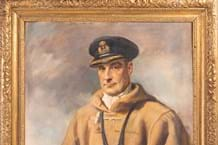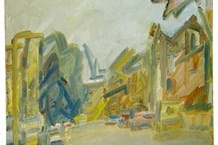However, after being rescheduled back to the fold of their February 6 Impressionist and Modern evening, Christie’s (17.5/10 per cent buyer’s premium) were not prepared to take too many risks with their inaugural ‘Art of the Surreal’ theme sale. Like Sotheby’s equivalent event in December 4, Christie’s sale was a qualified success with a conspicuous absence of the ‘trophy’ works by major-name artists which the theming process is meant to attract. Clearly owners of the world’s most valuable, market-fresh works by major-name artists such as de Chirico, Duchamp, Dali and Magritte feel unsure about this new format and their doubts would not have been resolved by Christie’s final total of £8m from 43 lots with 30 per cent of the lots left unsold, representing 15 per cent by value. With one or two exceptions – Francis Picabia’s Phoebus at £520,000 (£220,000-260,000) and Jean Arp’s Maskenspiel at £400,000 (£80,000-120,000) being the most notable – few lots sold over their estimates and even seasoned specialists were mystified why Rene Magritte’s seemingly commercial and market-fresh 1964 large-scale oil, Ceci n’est pas une pomme, illustrated here, could only muster a lower estimate £700,000 from a ‘European Institution’. This proved to be the joint top price with the £700,000 paid for Max Ernst’s 1928 oil, Le Mariée du Vent.
For the moment at least, Christie’s seem uncertain whether they will continue with this themed format. But one thing was proved beyond doubt by the exercise – Surrealism is a European market.
Post-sale analysis showed that a remarkable 85 per cent of the lots went to European buyers.
Europeans dominate a shaky new surreal world
UK: PRESIDING auctioneer Jussi Pylkkannen should surely have entered into the spirit of things by taking off his black bow tie and putting a bowler hat or a lobster on his head.




